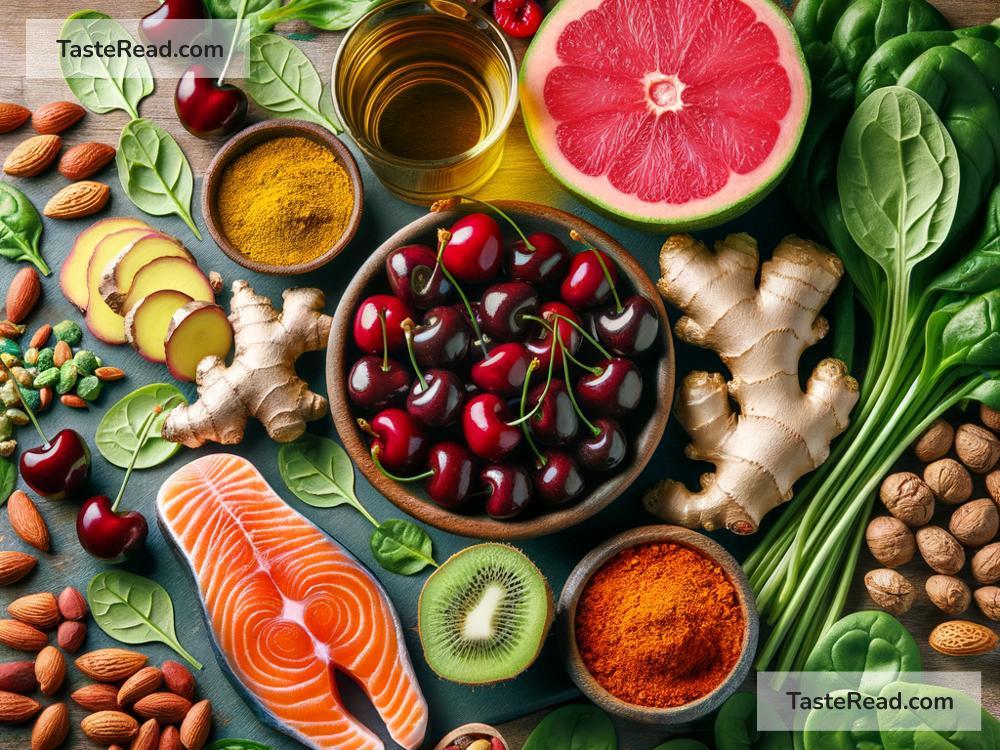Foods That Can Help Boost Analgesic Effectiveness
Pain is a common experience we all face at some point in life, whether it’s due to headaches, sore muscles, or chronic conditions. Medications like ibuprofen, acetaminophen, and other pain relievers are widely used to manage pain, but did you know that the foods you eat might also enhance their effectiveness? Some natural ingredients in foods have analgesic (pain-relieving) properties and can complement the efficacy of painkillers while supporting overall health. Let’s explore some of the top foods that can help improve analgesic efficacy.
1. Ginger
Ginger has been used for centuries as a natural remedy for inflammation and pain. It contains compounds called gingerols and shogaols, which have anti-inflammatory and analgesic qualities. Studies have shown that ginger can help reduce muscle pain, arthritis discomfort, and headaches.
If you’re taking pain medication, incorporating ginger into your diet may provide additional relief. You can consume it as tea, add it to smoothies, or use it as a flavorful spice in your meals.
2. Turmeric
Turmeric is well-known for its golden-yellow color and its key active ingredient, curcumin. Curcumin is a powerful anti-inflammatory compound that has been linked to reduced pain in conditions like arthritis and chronic joint issues.
Combining turmeric with black pepper can increase curcumin absorption in the body. When paired with pain medications, turmeric may help reduce inflammation quicker and make the treatment more effective. Sprinkle turmeric into soups, stews, or stir-fries, or mix it in a warm glass of milk.
3. Fatty Fish
Fatty fish like salmon, mackerel, and sardines are loaded with omega-3 fatty acids, which have remarkable anti-inflammatory benefits. Omega-3s help reduce swelling and pain, particularly for chronic conditions such as rheumatoid arthritis or menstrual cramps.
If you regularly suffer from pain, incorporating these healthy fats into your meals can support pain relief and benefit your heart and brain at the same time. Omega-3s work well as a dietary pairing alongside analgesics.
4. Dark Chocolate
Yes, you read that right—dark chocolate can be good for pain relief! Cocoa contains antioxidants and anti-inflammatory compounds that may help reduce pain sensitivity. Research has suggested that the flavonoids in dark chocolate can promote the release of endorphins, the body’s natural painkillers.
When choosing dark chocolate, look for options with at least 70% cocoa content and enjoy it in moderation. A small square or two can be the perfect guilt-free snack to ease discomfort and lift your mood.
5. Cherries
Cherries, especially tart cherries, are packed with antioxidants and anti-inflammatory compounds called anthocyanins. These substances can help reduce pain and inflammation, particularly for conditions like gout and arthritis.
Several studies have shown that drinking tart cherry juice can lower pain levels after intense physical activity or exercise. Pair it with pain relievers for muscle soreness or joint aches—your body will thank you!
6. Garlic
Garlic is famous for its strong flavor and medicinal properties. It contains allicin, a compound that can act as an anti-inflammatory agent and may reduce pain associated with joint conditions and infections.
While garlic works wonderfully on its own, incorporating it into your meals could help boost the effect of medications aimed at reducing inflammation-related pain. Roast, sauté, or crush garlic to add to soups, pasta, or salads.
7. Nuts and Seeds
Nuts like almonds and walnuts, along with seeds such as flaxseeds and chia seeds, are rich in omega-3 fatty acids, magnesium, and fiber. Magnesium, in particular, plays a critical role in relaxing muscles and calming nerve pain.
Including these crunchy superfoods in your diet can complement painkillers and provide long-lasting pain relief. Try them as snacks or add them to smoothies, oatmeal, or yogurt.
8. Green Tea
Green tea is rich in antioxidants called catechins, which have anti-inflammatory effects. It may help reduce pain associated with arthritis, head pain, or other inflammatory conditions. Green tea can also support your overall health and improve your mood.
Sipping a cup of green tea alongside pain medication might enhance the analgesic effect while giving you a comforting way to unwind.
9. Leafy Greens
Spinach, kale, and other leafy greens are nutrient powerhouses, providing magnesium, vitamin E, and antioxidants that combat inflammation and pain. Magnesium, in particular, has calming effects on muscles and nerves, making leafy greens a great addition to a pain-relieving lifestyle.
Try adding these veggies to salads, smoothies, or omelets to reap their benefits for pain management.
10. Spicy Foods (Capsaicin)
Capsaicin, the active component in hot peppers like chilies, has been shown to reduce pain through its effects on pain receptors. It’s commonly found in topical creams for pain relief but can also work internally when consumed in food.
Adding a touch of spice to your meals may help amplify the effects of pain medication if you enjoy heat in your food.
A Holistic Approach to Pain Relief
While these foods can help improve analgesic efficacy, it’s always essential to consult a healthcare professional when managing pain. Food can complement medication but should not replace medical advice or prescribed treatment. A balanced diet with anti-inflammatory and nutrient-rich foods can support your body’s natural healing capabilities and potentially reduce your reliance on painkillers.
Remember, small dietary changes every day can make a world of difference. By pairing healthy eating with medication and mindful practices like exercise, staying hydrated, and getting proper rest, you can take control of pain and live a healthier, more comfortable life.


